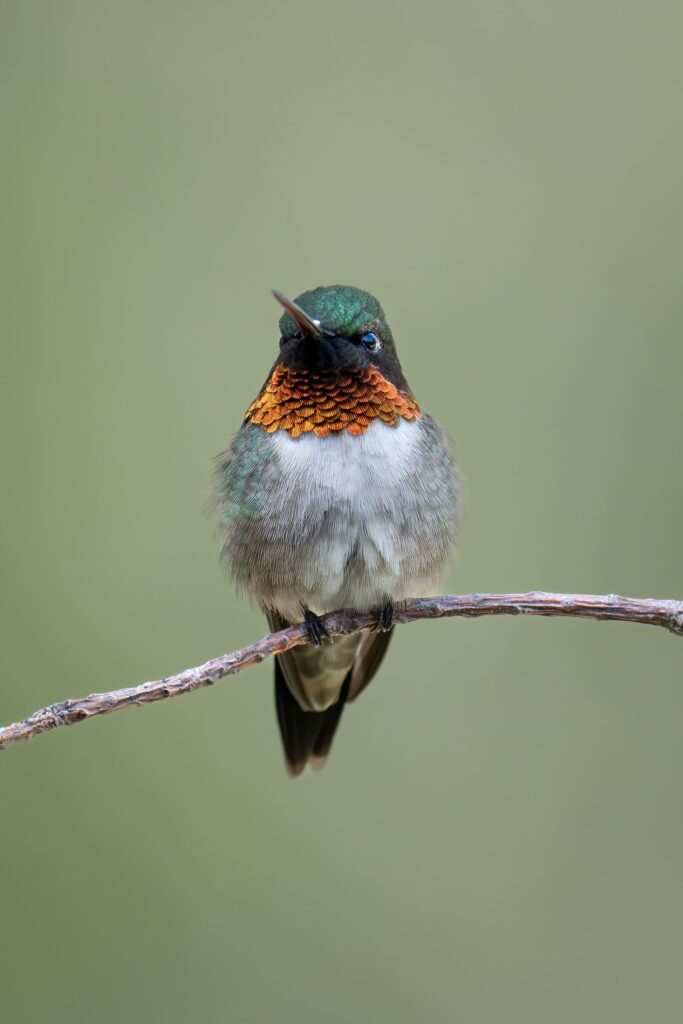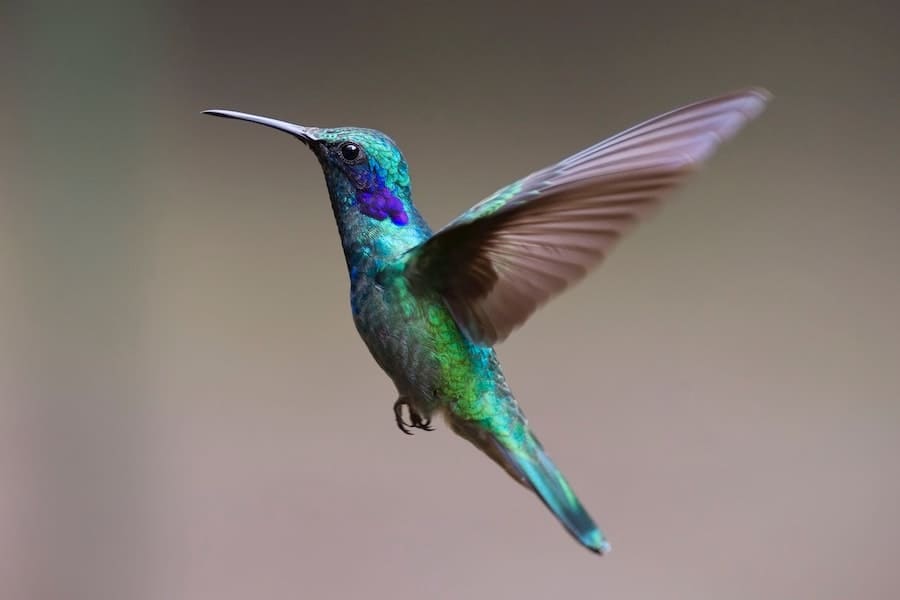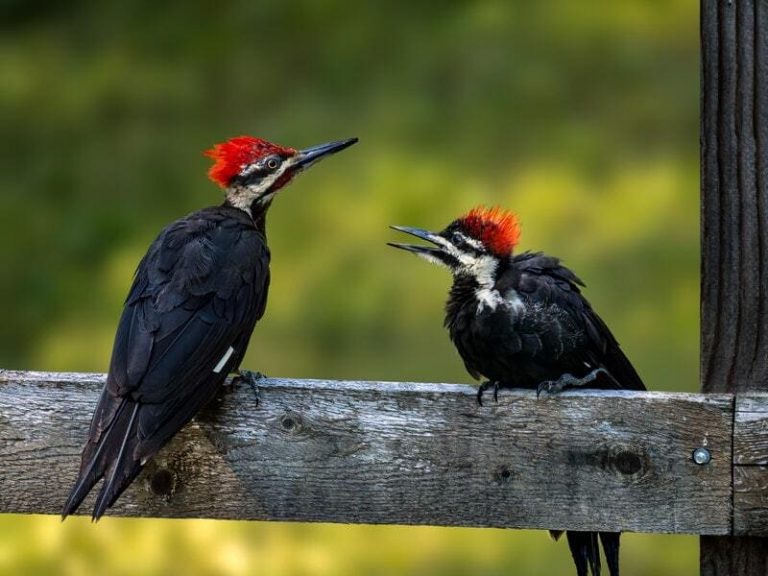Hummingbird Heart Rate: Why These Birds Are Marvels of Nature

Does the proverb “hummingbirds have hearts that beat like a drum” ever crossed your mind? Hummingbird heart rates are actually amazing; it is not just a figure of phrase.
These small birds’ hearts beat up to 1,260 times per minute while flying, which is among the highest rates of any animal on Earth. The typical human heart beats between 60 and 100 times per minute, in contrast.
The intriguing world of hummingbird heart rates, the reasons they pulse so quickly, and the effects it has on their daily life will all be covered in this article.
| Characteristics | Description |
|---|---|
| Resting heart rate | Hummingbirds have a resting heart rate of 250-500 beats per minute, which is the highest of any bird species. This high heart rate allows them to maintain a high metabolic rate even when at rest. |
| Active heart rate | During flight, a hummingbird’s heart rate can increase to up to 1,260 beats per minute. This allows them to achieve incredible feats of flight, including hovering and flying backwards. |
| Heart size | Hummingbird hearts make up 2.5-2.6% of their total body weight, which is relatively large compared to other bird species. This helps them pump oxygen-rich blood to their muscles during flight. |
| Heartbeat variability | Hummingbirds are able to rapidly increase or decrease their heart rate to adapt to changing energy demands, such as during flight or while at rest. |
| Oxygen uptake | Hummingbirds have the highest oxygen uptake per gram of any bird species. This allows them to extract oxygen from the air more efficiently, which is crucial for their high-energy lifestyle. |
| Torpor | During periods of torpor, a hummingbird’s heart rate can drop to as low as 36 beats per minute to conserve energy. |
| Metabolic rate | The high heart rate of hummingbirds is necessary to maintain a high metabolic rate, which is needed to fuel their fast wing beats and high-energy lifestyle. |
| Diet | Hummingbirds’ high heart rate allows them to quickly process the nectar they consume, which is their primary source of energy. |
| Adaptation | The high heart rate of hummingbirds is an adaptation to their high-energy lifestyle and need for fast oxygen delivery to their muscles. |
| Conservation | Understanding hummingbird heart rate can aid in conservation efforts for these important pollinators, as changes in habitat or climate can impact their ability to maintain their high-energy lifestyle. |
Contents
Hummingbird Heart Rate (Vídeo)
What makes hummingbird heart rates so unique?
Hummingbirds are renowned for their high-speed flying, hovering, and darting abilities.
Their heart rates must be extremely rapid to keep up with the energy requirements of their flight muscles in order to do these feats.
A hummingbird’s heart weighs up to 2.5% of its body weight, making it quite hefty. In contrast, the weight of a human heart is just around 0.5% of that of the entire body.
The hummingbird’s heart also has a distinctive form, being longer and more slender than that of other birds.
A faster heart rate results from the rapid contraction and relaxation of the heart muscle made possible by this configuration.
The importance of hummingbird heart rates

A hummingbird’s heart rate is not just fast, but it’s also incredibly efficient.
During flight, a hummingbird’s heart can pump up to 80% of its blood volume with each beat, which is almost twice as much as a human heart.
This high rate of blood circulation is necessary to deliver oxygen and nutrients to the hummingbird’s muscles, which require a lot of energy to sustain flight.
Additionally, hummingbirds are known for their ability to regulate their body temperature.
Unlike humans, hummingbirds are warm-blooded, meaning they maintain a constant internal body temperature regardless of the external environment.
To accomplish this, hummingbirds have a high metabolic rate that requires a constant supply of oxygen and energy.
Their fast heart rate helps to circulate blood quickly, delivering oxygen and nutrients to their tissues and removing waste products efficiently.
The relationship between hummingbird heart rate and flight
Hummingbirds have a unique flying style that relies on their rapid wing beats.
They beat their wings at a rate of 10-15 times per second, which requires a lot of energy. To fuel this high rate of wing beats, hummingbirds must consume up to twice their body weight in nectar and insects every day.
During flight, a hummingbird’s heart rate can increase even further, up to 1,260 beats per minute! This incredible feat is made possible by the hummingbird’s ability to adjust its heart rate rapidly in response to changes in its activity level.
When a hummingbird takes off from a stationary position, its heart rate can increase from 250 beats per minute to over 1,200 beats per minute in just a few seconds.
This rapid increase in heart rate helps to provide the extra energy required for takeoff and sustained flight.
How do hummingbirds rest?
With such a high heart rate, it’s natural to wonder how hummingbirds rest.
To conserve energy, hummingbirds enter a state of torpor, which is similar to hibernation.
During torpor, hummingbirds lower their metabolic rate, body temperature, and heart rate, which can drop to as low as 50 beats per minute.
This state allows them to conserve energy during times when food is scarce or when they need to rest between flights.
What are the implications of hummingbird heart rates on conservation?

Hummingbirds are an essential part of many ecosystems, as they play a critical role in pollination and seed dispersal.
Unfortunately, many species of hummingbirds are facing threats such as habitatdegradation, climate change, and pesticide use.
Understanding the unique physiological traits of hummingbirds, such as their high heart rates, can help us develop better conservation strategies to protect these remarkable creatures.
For example, researchers are studying how hummingbirds respond to changes in their environment, such as changes in temperature or food availability.
By understanding how hummingbirds adapt to these changes, we can better predict how they will respond to future threats and develop conservation strategies that are more effective.
Additionally, understanding the energy demands of hummingbirds and their dependence on nectar and insects can help us develop better management practices for their habitats.
For example, planting nectar-rich flowers in gardens or parks can help provide a reliable food source for hummingbirds, especially during times when natural food sources are scarce.
FAQ
Why is hummingbird heart rate so high?
Hummingbird heart rates are high because they have a very high metabolic rate. This high metabolic rate is necessary to support their rapid wing beats and sustain flight.
To fuel this high rate of wing beats, hummingbirds must consume up to twice their body weight in nectar and insects every day.
Do hummingbirds have the fastest heart rate?
Yes, hummingbirds have one of the fastest heart rates of any animal on Earth.
During flight, a hummingbird’s heart rate can reach up to 1,260 beats per minute! However, the actual heart rate can vary depending on the hummingbird’s activity level.
How many beats per minute does a hummingbird fly?
A hummingbird’s heart rate can reach up to 1,260 beats per minute during flight.
However, when resting or sleeping, a hummingbird’s heart rate can drop to as low as 50 beats per minute.
How many wing beats per minute does a hummingbird have?
A hummingbird’s wings can beat up to 10-15 times per second, or up to 900 beats per minute! However, the actual wing beat rate can vary depending on the hummingbird’s activity level.
Which bird has the fastest heartbeat?
Hummingbirds have the fastest heartbeat of any bird species.
However, other birds such as eagles, ducks, and chickens also have relatively high heart rates compared to other animals.
Conclusion
Hummingbirds are truly remarkable creatures, with their high heart rates being just one of the many unique traits that make them so fascinating.
Their rapid wing beats, high metabolic rates, and ability to enter torpor are just a few examples of how hummingbirds have adapted to their environment to become some of the most efficient flyers on Earth.
Understanding the physiology of hummingbirds, including their unique heart rates, can help us develop better conservation strategies to protect these incredible creatures.
By learning how they respond to changes in their environment and providing reliable food sources, we can help ensure that hummingbirds continue to thrive for generations to come.
You will also enjoy reading:






